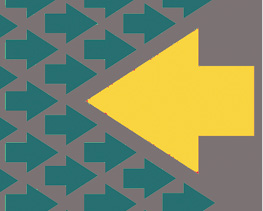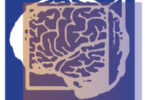by Fred Steinhauser, OMICRON electronics GmbH, Austria
The AI hype is going on.
And it fosters the hope of many
to be able to do things with AI that they could not achieve without it.

While I still believe that AI will have many useful applications in PAC, it is a question whether it solves a general problem or if it serves the hopes of individuals.
Can anybody remember Fuzzy Logic? It was a hot topic among control engineers in the 1990s, although on a much more limited scale than the AI hype of today. Control engineering is a challenging matter. It requires a solid understanding of system dynamics and the mastering of control concept selection and parameter setting. Every so often I have seen people lacking these skills failing with a trial-and-error approach. Fuzzy Logic is a method of describing the relationship between controller input and output with membership functions. This seems to be easier to understand than other controller concepts and their transfer functions. While Fuzzy Logic has valid applications, it is not a silver bullet. Not surprising, people without sufficient control engineering skills were still not able to solve control problems with Fuzzy Logic. The hope of replacing skills with new tools did not materialize.
Similar hopes are projected on AI. Recently, I saw a post on LinkedIn, somehow titled like: “I am not a video editor, but AI made me one.” And here it was again: the expectation that this new tool enables someone to achieve things that she is not qualified for otherwise.
So, what part of the video editor’s tasks are served by AI now? Is it the creation of the story, the transformation of thoughts into scenes, the connection between emotions and views? Or is it proposing stock clips to choose from, putting them on a timeline, combining them with royalty free music and rendering them out to a video file? I’m not sure, but I tend to the latter. If someone imagines the task of the video editor like this, then he should be prepared to be entirely replaced by AI in the first place.
This leads to the question of how relevant the skills are which become substituted by AI. For programming computers, AI can deliver code in any popular programming language, but only if the problem is sufficiently well explained to the AI. The problem description and solution design is the creative part. Query engineering will become the relevant skill, in this case based on knowledge about software development. AI can then pick from learned patterns and spit out the related code. So, is coding still a relevant skill or maybe a task that we gladly hand over to AI?
We must value personal knowledge and skills. This is what keeps us on top of the machines. Sometimes we hear the premature statement from students “I will never ever need this.” You never know. Almost everything I ever learned I could use in one or another way at some time. Very frustrating for a teacher is the question “is this relevant for the exam?” This implies that knowledge is only valuable if it helps to pass a test.
My hope is that the real creative part remains the domain of skilled humans with sound knowledge in their profession. And for this, you never have too many skills.
I will shut up when AI comes up with a proof for one of the Millennium Prize Problems by the Clay Mathematics Institute. Repeating one of the many well-known proofs for the Pythagorean theorem does not cut it.
Biography:

Fred Steinhauser studied Electrical Engineering at the Vienna University of Technology, where he obtained his diploma in 1986 and received a Dr. of Technical Sciences in 1991. He joined OMICRON and worked on several aspects of testing power system protection. Since 2000 he worked as a product manager with a focus on power utility communication. Since 2014 he is active within the Power Utility Communication business of OMICRON, focusing on Digital Substations and serving as an IEC 61850 expert. Fred is a member of WG10 in the TC57 of the IEC and contributes to IEC 61850. He is one of the main authors of the UCA Implementation Guideline for Sampled Values (9-2LE). Within TC95, he contributes to IEC 61850 related topics. As a member of CIGRÉ he is active within the scope of SC D2 and SC B5. He also contributed to the synchrophasor standard IEEE C37.118.








